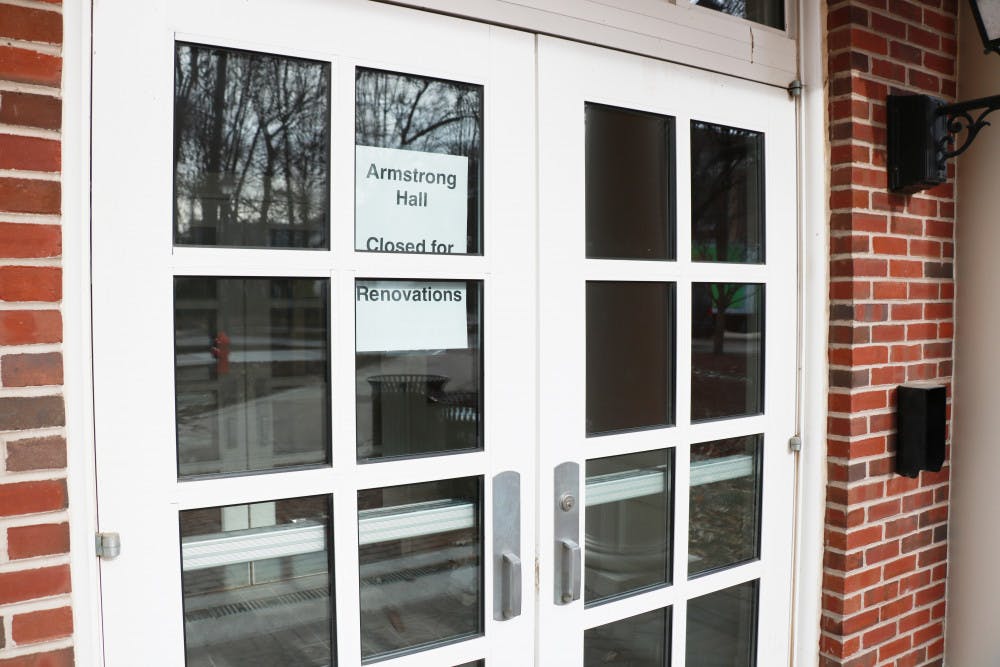By Camille Furst
News Editor
In an email sent out on Jan. 15, Steven Schreiner, the dean of the School of Engineering, announced that Armstrong Hall has closed for renovations for the 2019 calendar year.
With the building reopening in January 2020, these renovations will allow for much needed space for design projects and student and faculty research, according to Schreiner.

The reconstruction of Armstrong Hall is the third and last phase in the College’s STEM project, which has been at least five years in the making. This includes the previous construction of the STEM Building and the Science Complex, which opened in October of 2017.
“The renovation of Armstrong is part of our largest strategic planning that we’ve been doing for many years,” Schreiner said. “So both the renovation of Armstrong (and) the new STEM Building are the result of looking at what the needs of the school are and making sure we provide them.”
Until Armstrong Hall reopens, six buildings will substitute as space for classes and services. These buildings include the STEM Building, Forcina Hall, the R. Barbara Gitenstein Library and others across campus.
The library will be used for its computer labs in the basement, according to Schreiner. On these computers, all of the previous software along with the software necessary for engineering students will be available for them to use.
Many engineering students have varied opinions on the reconstruction process.
“Forcina Hall wasn’t designed for engineering courses so it won’t be the best fit,” said senior engineering science major Albert Martin. “Armstrong is nicer than Forcina Hall. The only difference between the two will just be the size of the desks and the location of the labs.”
While many students are concerned about the future spaces used for labs and classrooms, many believe the renovations are necessary and vital for the School of Engineering.
“Although this is the current situation, the much needed renovations will allow for Armstrong to be a hub of education similar to (how) the STEM building is now,” said freshman biomedical engineering major Megan Blakeley.
The results of Armstrong Hall are supposed to improve functionality, increase space for students and faculty and have architectural elements similar to that of the current STEM building, such as glass walls.
“We’re doing the same thing in Armstrong so you can see into these spaces and have a more interactive and more collaborative atmosphere,” Schreiner said. “We’re always trying to save money as well –– we want to be very cognizant of that.”
Current construction is moving quickly and, according to Schreiner, Armstrong Hall should reopen in January of 2020.







